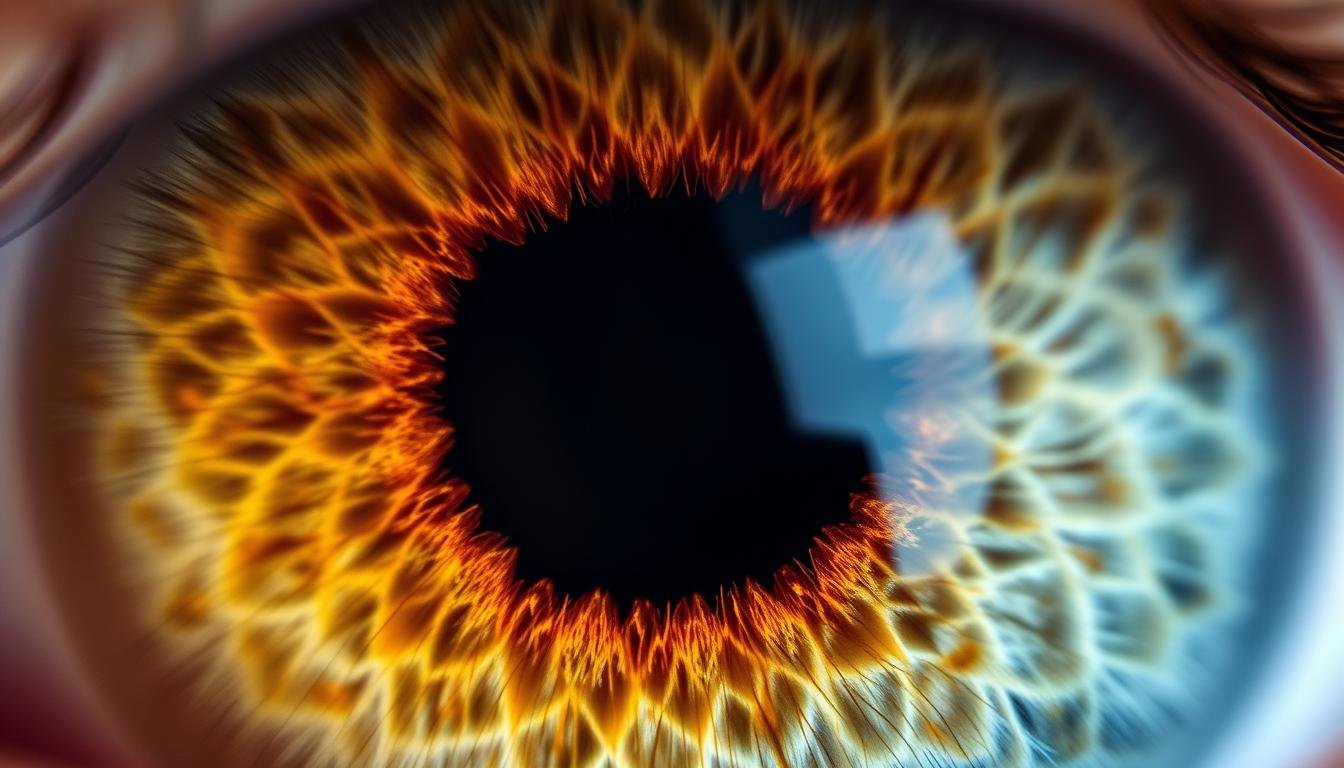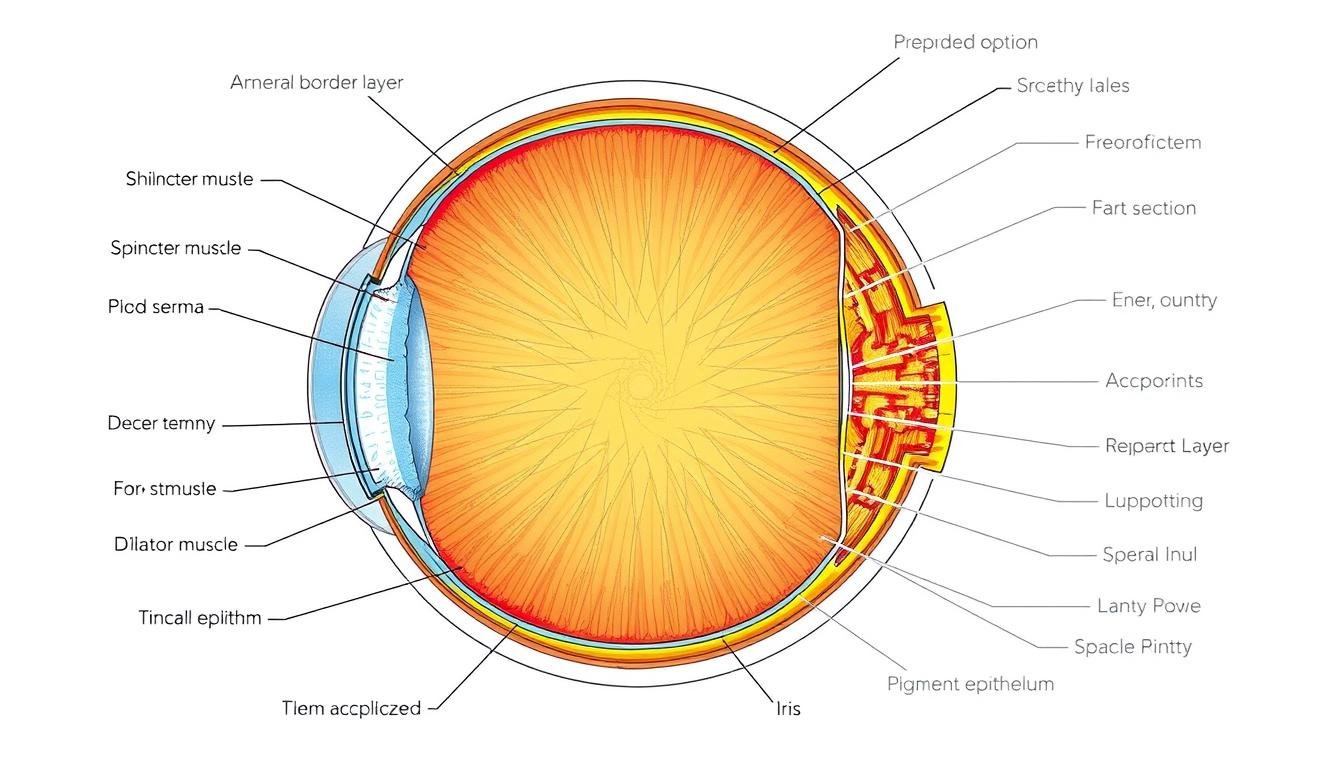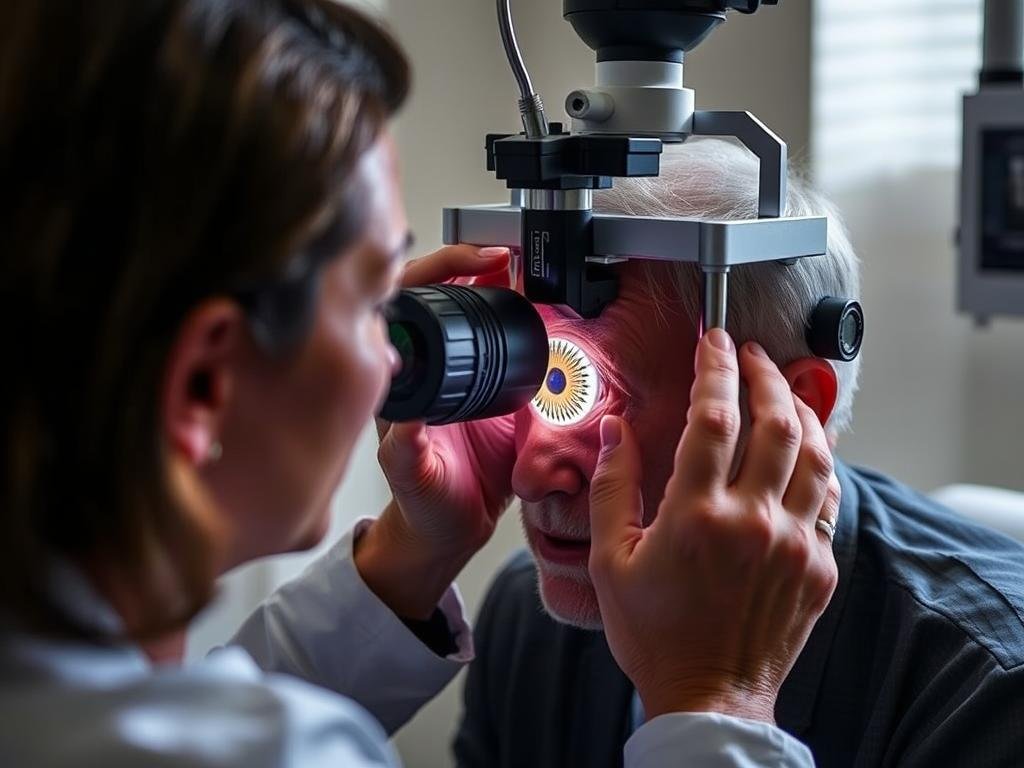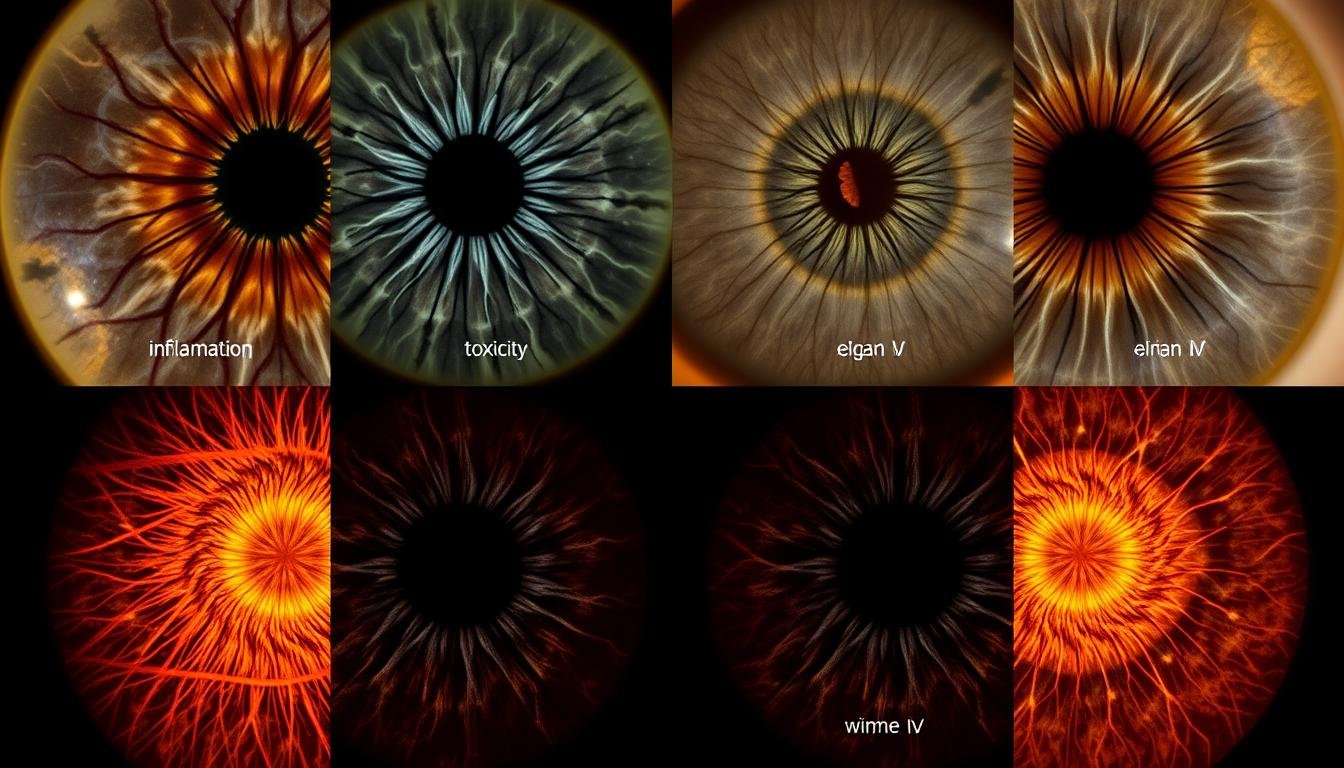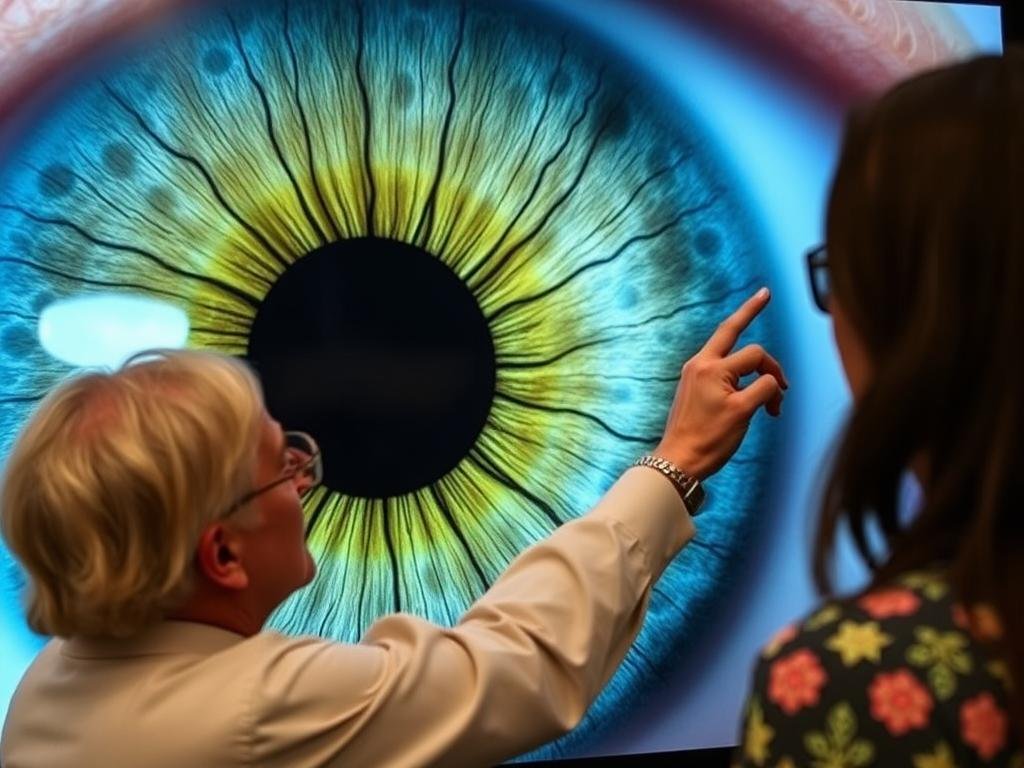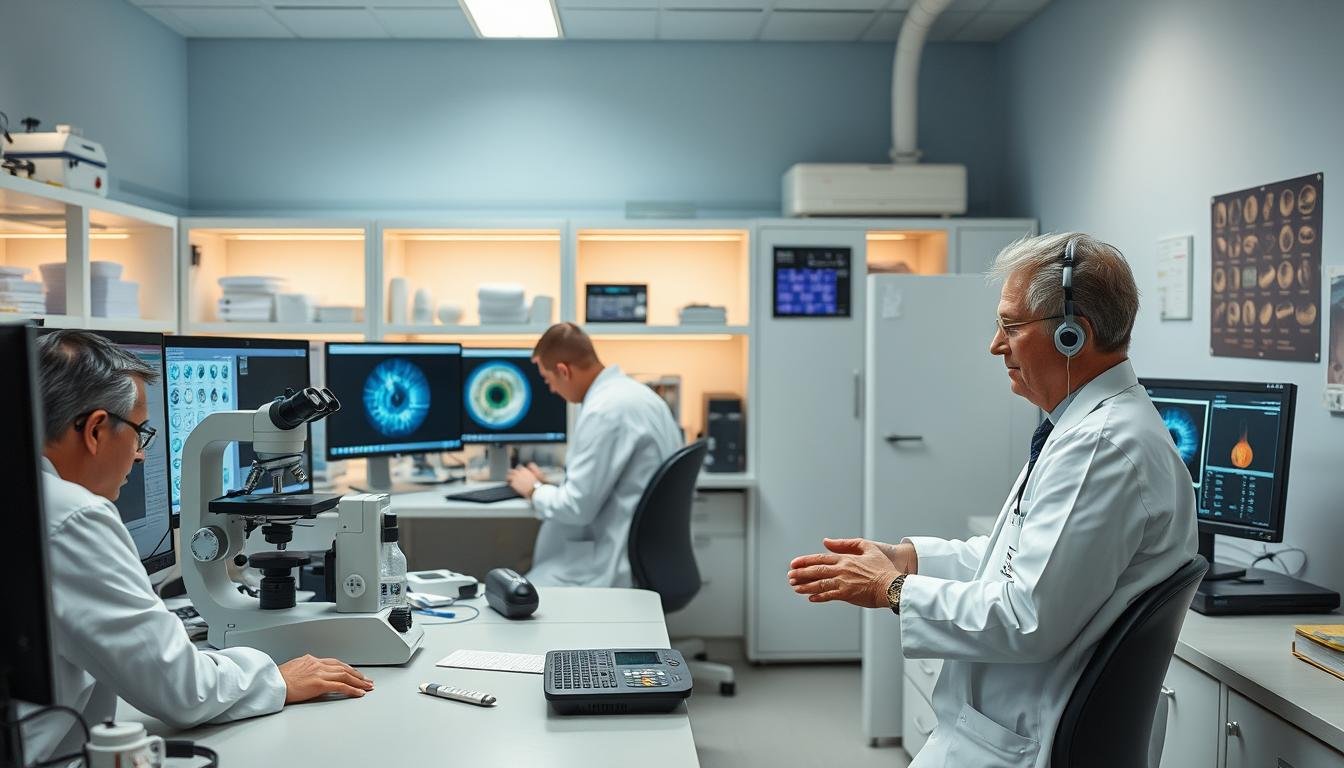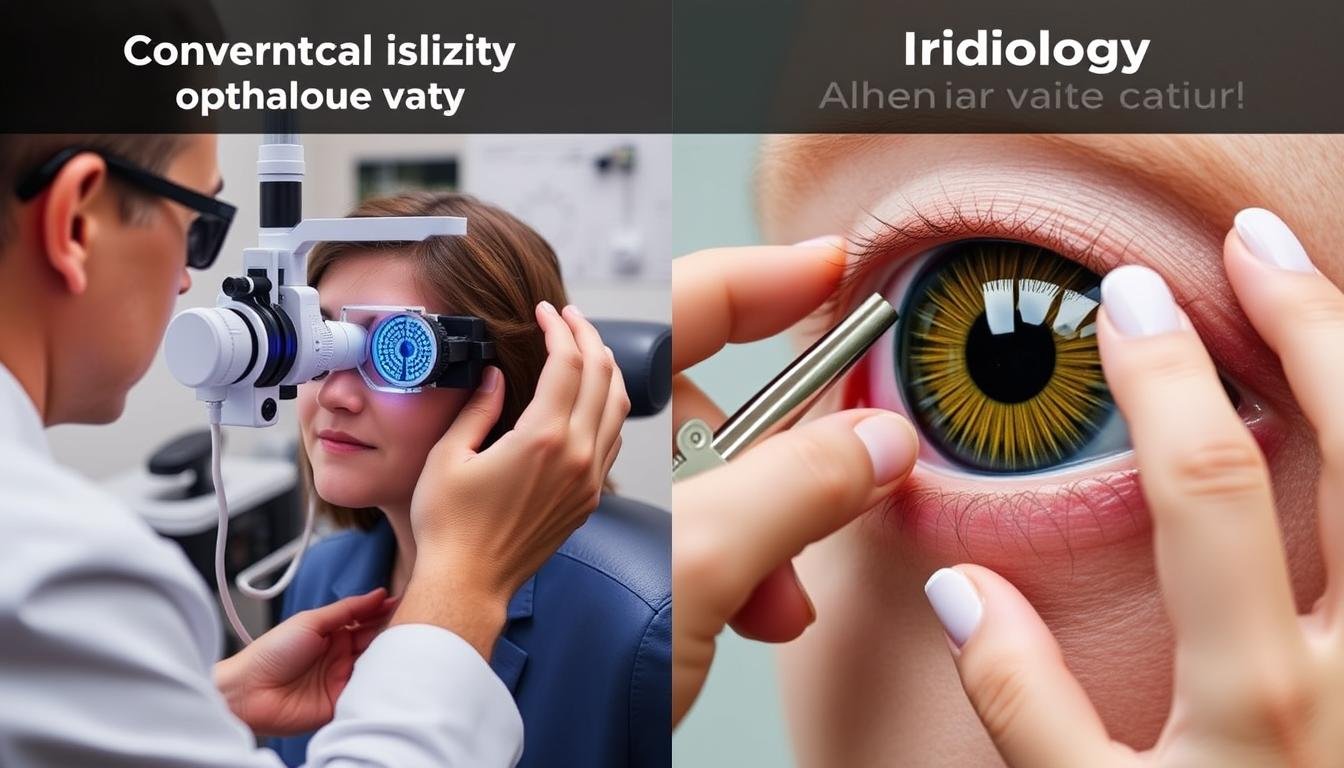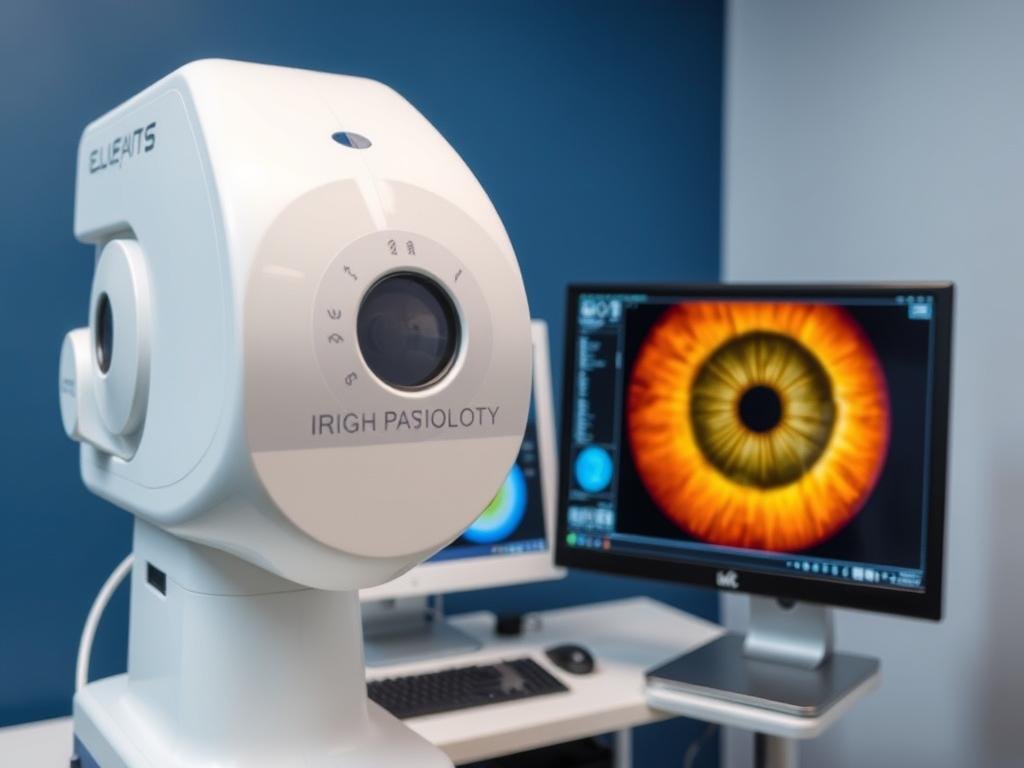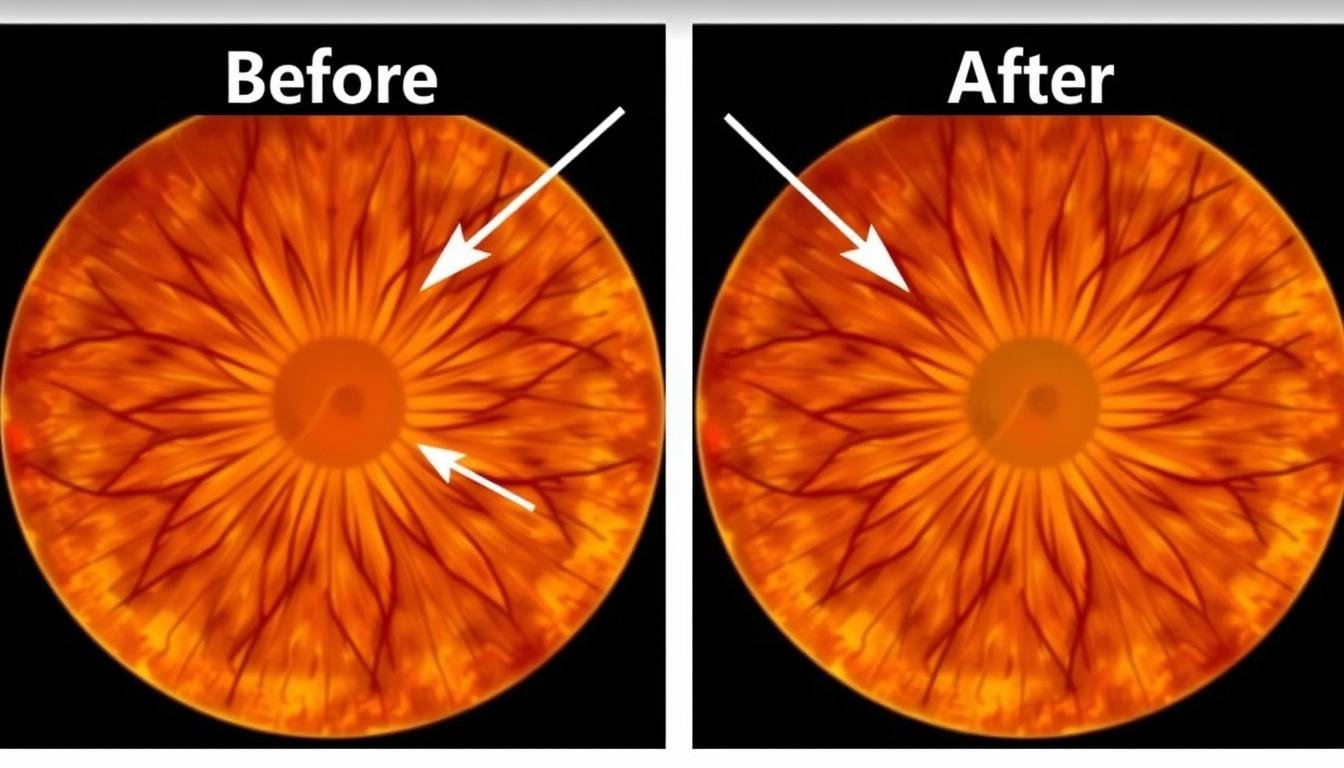The human iris, with its intricate patterns and unique coloration, has long fascinated both medical professionals and alternative health practitioners. Beyond determining your eye color, some believe the iris holds valuable information about your overall health. علم القزحية suggests that specific markings, colors, and patterns in your iris can reveal information about your body’s past, present, and potential future health conditions. This practice has gained attention as a non-invasive method for health assessment, though it remains controversial in conventional medical circles.In this comprehensive guide, we’ll explore the scientific foundations of علم القزحية, examining both historical perspectives and modern research. We’ll delve into how practitioners map iris patterns to organ systems, the anatomy behind these connections, and the ongoing debate about its validity as a diagnostic tool. Whether you’re a healthcare professional, alternative medicine practitioner, or simply curious about holistic approaches to health assessment, this article provides an evidence-based exploration of علم القزحية‘s principles and applications.
ما هو علم القزحية? A Historical and Modern Perspective
علم القزحية is an alternative medicine practice that involves examining the patterns, colors, and other characteristics of the iris to evaluate a person’s overall health. Practitioners of علم القزحية, known as iridologists, believe that each area of the iris corresponds to a specific organ or body system, and that changes in these areas can reflect changes in the health of the corresponding body parts.
الأنماط المعقدة للإيريس البشرية التي يحللها علماء القزحية للتقييم الصحي
The core premise of علم القزحية is that the iris serves as a “رسم خريطة” من الجسم ، مع مناطق مختلفة تتوافق مع أعضاء وأنظمة مختلفة. وفقًا لهذه النظرية ، عندما يختبر عضو أو نظام الضغط أو الالتهاب أو غيرها من القضايا الصحية ، فإن التغييرات المقابلة تظهر في القزحية. قد تتضمن هذه التغييرات المواقع أو الخطوط أو التلطيخ أو التعديلات الهيكلية التي يفسرها عالم القزحية لتقييم حالتك الصحية.
Historical Development of علم القزحية
في حين يزعم بعض المؤيدين أن أشكال الفحص من القزحية تعود إلى الحضارات القديمة في مصر والصين والهند ، الحديثة علم القزحية كما نعلم ، بدأ اليوم في التبلور في القرن التاسع عشر.

Ignaz Von Peczely ، يعتبر الطبيب الهنغاري والد علم القزحية الحديث
The foundations of modern علم القزحية are often attributed to Ignaz von Peczely, a Hungarian physician in the 1800s. According to popular accounts, as a child, von Peczely noticed a dark streak in the iris of an owl whose leg he had accidentally broken. This observation sparked his curiosity, and he later developed the theory that changes in the iris could reflect injuries or diseases in corresponding parts of the body.
في عام 1881 ، نشر Von Peczely كتابه الأول عن الموضوع ، “الاكتشافات في مجال العلوم الطبيعية والطب: التعليم في دراسة التشخيص من العين ،” which included the first known iris chart mapping different areas of the iris to various body parts.
Another significant figure in the development of علم القزحية was Nils Liljequist, a Swedish homeopath who independently developed similar theories around the same time. Liljequist claimed to have observed changes in his own iris after taking medications like quinine and iodine, which led him to create his own iris charts.
In the United States, علم القزحية gained popularity in the 1950s through the work of Bernard Jensen, an American chiropractor who developed his own method of iris analysis and created detailed iris charts that are still used by many practitioners today. Jensen’s work helped popularize علم القزحية as part of the broader natural health movement in America.
The Science Behind علم القزحية: Mapping Iris Patterns to Organ Systems
The practice of علم القزحية is based on the premise that the iris contains a wealth of information about the body’s health. Understanding the methodology and tools used by iridologists provides insight into how this practice is conducted and the scientific principles it claims to follow.
Iris Anatomy and Its Relevance to علم القزحية

Anatomical structure of the iris showing the various layers examined in iridology
The iris is a complex structure composed of multiple layers and features:
- The anterior border layer (the front surface visible during examination)
- The stroma (connective tissue with blood vessels, nerves, and muscle fibers)
- The sphincter and dilator muscles (controlling pupil size)
- The posterior epithelium (containing pigment that gives the iris its color)
Iridologists believe that the iris’s intricate structure, with its thousands of nerve endings, microscopic blood vessels, and muscle fibers, creates a unique connection to the rest of the body through the nervous system. According to علم القزحية theory, this neurological connection allows the iris to reflect changes in distant organs and tissues.
ال علم القزحية Chart: Mapping the Body
The cornerstone of علم القزحية practice is the iris chart, which divides the iris into approximately 60 zones, each corresponding to a different part of the human body. These charts typically follow a few key principles:
Structural Organization
- القزحية الصحيحة تتوافق بشكل عام مع الجانب الأيمن من الجسم
- يتوافق القزحية اليسرى بشكل عام مع الجانب الأيسر من الجسم
- ينقسم القزحية إلى مناطق متحدة المركز تمثل أنظمة الجسم المختلفة
- غالبًا ما يتم تنظيم الرسم البياني مثل وجه الساعة ، مع وضع الأعضاء والأنظمة في محددة “ساعات”
Interpretation Elements
- Color variations and pigmentation changes
- Structural features like fibers, rings, and crypts
- Lesions, spots, and other markings
- Pupil characteristics and reactions
Enhance Your Understanding of Iris Analysis
Download our comprehensive iridology chart and beginner’s guide to start learning how to identify key iris patterns and their potential health correlations.
قم بتنزيل مخطط علم القزحية مجانًا
أدوات وتقنيات الفحص

عالم القزحية يجري فحصًا باستخدام معدات متخصصة
يستخدم علماء القزحية الحديث عادةً عدة أدوات لإجراء اختباراتهم:
- Penlight أو مصباح يدوي لإلقاء الضوء على القزحية
- تكبير الزجاج أو Loupe للتفتيش الدقيق
- الكاميرات الرقمية مع العدسات الكلية للتصوير التفصيلي
- كاميرات القزحية المتخصصة المصممة خصيصًا لعلم القزحية
- برنامج الكمبيوتر لتحليل صور IRIS
During an examination, the iridologist first takes a detailed look at both irises, noting their overall color, structure, and any visible markings. They may take photographs to analyze later or use computer software that helps identify patterns and compare them to established iridology charts.
Health Conditions Identified Through علم القزحية
Practitioners of علم القزحية claim they can identify a wide range of health conditions and predispositions by examining the iris. While these claims lack scientific validation in conventional medicine, understanding what iridologists believe they can detect helps explain the practice’s appeal to those interested in holistic health approaches.

مقارنة أنماط القزحية التي توضح ما يفسره علماء القزحية على أنه مؤشرات الحالة الصحية
Common Health Issues Supposedly Revealed Through علم القزحية
وظيفة الأعضاء
- ضعف الكبد
- إجهاد الكلى
- اضطرابات الجهاز الهضمي
- نقاط ضعف القلب
- ظروف الرئة
الظروف النظامية
- التهاب في جميع أنحاء الجسم
- تراكم السم
- احتقان نظام اللمفاوية
- قضايا الدورة الدموية
- اختلالات هرمونية
مؤشرات الصحة العامة
- أوجه القصور الغذائية
- مستويات التوتر والموقع
- الاستعدادات الوراثية
- الإصابات السابقة أو الصدمات
- القوة الدستورية العامة
يزعم علماء القزحية أيضًا أنهم يستطيعون اكتشاف المشكلات الصحية قبل ظهور الأعراض ، مما يشير إلى أن التغييرات في القزحية تسبق تطور الأعراض الجسدية. هذا الادعاء بالاكتشاف المبكر جذاب بشكل خاص للمهتمين بالمناهج الصحية الوقائية.

طبيب قزحية يحدد علامات قزحية محددة وشرح تفسيره
من المهم أن نلاحظ أنه على الرغم من أن علماء القزحية يقدمون هذه المطالبات ، فإن القدرة على تشخيص حالات صحية محددة من خلال فحص القزحية لم يتم التحقق من صحتها من خلال البحث العلمي ، حيث سنستكشف في القسم التالي.
Discover What Your Iris May Reveal About Your Health
Curious about what your iris patterns might indicate? Schedule a consultation with a certified iridologist for a personalized assessment and health insights.
Find a Certified Iridologist
Criticisms and Controversies Surrounding علم القزحية
Despite its long history and continued practice, علم القزحية has been subject to scientific scrutiny, with most research failing to support its fundamental claims. Understanding the scientific perspective helps provide a balanced view of this alternative practice.

البحث العلمي الذي يدرس صحة مطالبات القزحية
الدراسات البحثية ونتائجها
Several controlled studies have investigated the diagnostic accuracy of علم القزحية:
- مراجعة منهجية نشرت في عام 1999 في المجلة البحوث تكملة فحص أربع دراسات للتحكم في الحالات وخلص إلى أن فعالية علم القزحية لم تدعمها التقييمات العلمية.
- دراسة نشرت في عام 2000 في محفوظات طب العيون وجدت أن علماء القزحية لا يمكن أن يكتشف باستمرار مرض الكلى من خلال فحص القزحية.
- الأبحاث المنشورة في مجلة الطب البديل والتكميلي فشل في العثور على أدلة على أن علماء القزحية يمكنهم تشخيص مرض المرارة بدقة من خلال فحص القزحية.

مقارنة بين الفحص الطبي التقليدي للعين وتقييم القزحية
Most scientific studies have concluded that علم القزحية has shown little to no diagnostic value when tested under controlled conditions. Researchers have consistently found that iridologists cannot reliably identify people with specific diseases by examining their irises.
منظور المجتمع الطبي
The mainstream medical community generally does not support علم القزحية as a diagnostic tool for several reasons:
المخاوف العلمية حول علم القزحية
- عدم وجود علاقة تشريحية بين القزحية ومعظم أعضاء الجسم
- غياب آلية فسيولوجية لشرح كيف ستؤثر ظروف الأعضاء الداخلية على مظهر القزحية القزحية
- نتائج غير متناسقة عندما يفحص العديد من علماء القزحية نفس المريض
- الفشل في إظهار دقة التشخيص في الدراسات الخاضعة للرقابة
- يتم تحديد بنية القزحية إلى حد كبير من خلال علم الوراثة ولا يزال مستقرًا نسبيًا طوال الحياة
Medical professionals express concern that reliance on علم القزحية for diagnosis could potentially lead to delayed treatment of serious conditions if patients forego conventional medical diagnosis in favor of iridology readings.
While the scientific consensus does not support علم القزحية as a diagnostic method, some researchers suggest that further studies with improved methodology could be valuable to fully evaluate any potential correlations between iris features and health conditions.
Modern Applications of علم القزحية in Holistic Health
Despite the lack of scientific validation, علم القزحية continues to be practiced in various parts of the world, particularly within holistic and alternative health communities. Understanding its contemporary applications provides insight into why some people still seek out this practice.

ممارسة القزحية الحديثة في بيئة صحية شمولية معاصرة
التكامل مع الممارسات الصحية الشاملة
In today’s wellness landscape, علم القزحية is often integrated with other alternative and complementary health approaches:
- كجزء من تقييمات العلاج الطبيعي لتوجيه توصيات العلاج
- بالتزامن مع الاستشارة الغذائية لاقتراح التعديلات الغذائية
- إلى جانب الطب العشبي لإبلاغ الوصفات العشبية
- ضمن التقييمات الصحية الشاملة التي تتضمن طرق تقييم متعددة
- كأداة تكميلية في بعض ممارسات الطب التكاملي
Practitioners who use علم القزحية today often view it as one tool among many for assessing overall health patterns rather than as a definitive diagnostic method for specific diseases.

التكنولوجيا الرقمية الحديثة المستخدمة في ممارسة القزحية المعاصرة
التقدم التكنولوجي
Technology has influenced how علم القزحية is practiced in the 21st century:
- الكاميرات الرقمية عالية الدقة تلتقط صورًا مفصلة
- البرامج المتخصصة تحلل أنماط وعلامات القزحية
- تقدم المنصات عبر الإنترنت استشارات في علم القزحية عن بُعد
- تسمح تطبيقات الهاتف المحمول بتحليل القزحية الأولية
وقد حققت هذه التطورات التكنولوجية علم القزحية more accessible but haven’t necessarily increased its diagnostic accuracy according to scientific standards.
Enhance Your Holistic Health Practice
For health practitioners interested in adding iridology to their skill set, our comprehensive certification program provides the training and tools you need.
استكشاف برامج الشهادات
دراسات الحالة: علم القزحية in Practice
While scientific validation remains limited, proponents of علم القزحية often cite case studies to demonstrate its potential value in health assessment. These examples provide insight into how practitioners apply iridology principles in real-world scenarios.

Before and after iris images showing changes following health interventions according to iridology practitioners
دراسة الحالة 1: تقييم الجهاز الهضمي
A 42-year-old woman consulted an iridologist after experiencing chronic digestive issues that conventional testing had not fully explained. The iridologist noted specific markings in the digestive zone of her iris that suggested inflammation and potential food sensitivities. Based on these observations, the practitioner recommended an elimination diet and specific herbal supplements.
The client reported improvement in her symptoms after following the recommendations for three months. While this outcome cannot definitively be attributed to the accuracy of the iridology assessment, it represents the type of anecdotal evidence often cited by practitioners.
Case Study 2: Early Detection Claims

Iris photograph with markings indicating potential health concerns according to iridology interpretation
A 55-year-old man underwent routine iridology screening as part of a holistic health check. The iridologist identified markings in the area corresponding to the cardiovascular system and suggested the client might be experiencing early cardiovascular stress, despite having no symptoms. The client followed up with conventional medical testing, which revealed moderately elevated blood pressure and cholesterol levels that had not been previously diagnosed.
While conventional screening would likely have detected these issues eventually, proponents suggest this case demonstrates how علم القزحية might complement traditional healthcare by encouraging preventive testing.
It’s important to note that these case studies represent anecdotal evidence rather than controlled scientific research. The positive outcomes could be attributed to various factors, including the placebo effect, lifestyle changes recommended alongside the iridology assessment, or coincidental timing.
كثيرا ما يتم طرح الأسئلة حول علم القزحية
هل علم القزحية هو نفس فحص العين العادية؟
No, علم القزحية is fundamentally different from a conventional eye examination. A regular eye exam performed by an optometrist or ophthalmologist focuses on assessing vision and detecting eye diseases such as glaucoma, cataracts, or macular degeneration. These professionals use standardized, scientifically validated methods to evaluate eye health and vision.
علم القزحية, in contrast, involves examining the iris to allegedly determine the health status of other body organs and systems—not to diagnose eye conditions themselves. While a conventional eye exam has proven diagnostic value and is an essential part of healthcare, علم القزحية lacks scientific validation for its claims about diagnosing non-ocular health conditions.
هل يمكن لعلم القزحية اكتشاف أمراض خطيرة مثل السرطان؟
There is no scientific evidence supporting the claim that علم القزحية can detect cancer or other serious diseases. Multiple controlled studies have failed to demonstrate that iridologists can reliably identify specific diseases through iris examination.
For serious conditions like cancer, it’s crucial to rely on evidence-based medical diagnostic methods such as imaging studies, biopsies, blood tests, and physical examinations performed by qualified healthcare professionals. Delaying conventional medical diagnosis and treatment while relying on علم القزحية could potentially lead to worse health outcomes for serious conditions.
ما هي المؤهلات التي لدى علماء القزحية عادة؟
The qualifications of iridologists vary widely as there is no standardized, universally recognized certification or licensing specifically for علم القزحية in most countries. Some practitioners may have completed courses or certification programs in علم القزحية offered by various schools or organizations dedicated to alternative medicine. These programs can range from brief weekend courses to more extensive training programs.
Some iridologists may also be licensed healthcare practitioners such as naturopathic doctors, chiropractors, or acupuncturists who have added علم القزحية to their practice. Others may have no formal healthcare training at all. When considering consulting an iridologist, it’s advisable to inquire about their specific training, approach, and whether they recommend علم القزحية as a complement to, rather than a replacement for, conventional medical care.
How much does an iridology consultation typically cost?
The cost of an علم القزحية consultation varies widely depending on the practitioner’s experience, location, and whether the session includes additional services such as nutritional counseling or supplement recommendations. Generally, prices range from to 0 for an initial consultation, which typically lasts 30-90 minutes.
Follow-up sessions are usually less expensive, ranging from to 0. Some practitioners may offer package deals that include the initial consultation, follow-up visits, and personalized health plans. It’s important to note that علم القزحية consultations are rarely covered by health insurance, so these costs are typically out-of-pocket expenses.

A balanced approach to health combines conventional care with holistic awareness
Conclusion: The Place of علم القزحية in Modern Health Practices
علم القزحية presents an intriguing concept—that the iris might serve as a window into our overall health. While the practice has a long history and continues to attract interest, particularly in holistic health communities, it’s important to approach it with an informed perspective.
The scientific evidence does not currently support علم القزحية as a reliable diagnostic method. Multiple controlled studies have failed to demonstrate that iridologists can consistently identify specific health conditions through iris examination. The medical community generally views علم القزحية as lacking scientific foundation and potentially problematic if it leads people to delay seeking conventional medical care for serious conditions.
However, for those interested in holistic approaches to health, علم القزحية might be viewed as one of many tools for general health assessment rather than as a definitive diagnostic technique. Some find value in the holistic perspective it offers, even if specific diagnostic claims remain unproven.
If you’re curious about علم القزحية, consider these balanced recommendations:
- Approach علم القزحية as a complementary tool rather than a replacement for conventional medical diagnosis
- الحفاظ على فحوصات منتظمة مع مقدمي الرعاية الصحية المؤهلين
- تشكك في التشخيصات الصحية النهائية التي تم إجراؤها فقط من خلال فحص القزحية
- ابحث عن مؤهلات ونهج أي ممارس في علم القزحية الذي تفكر فيه على الاستشارة
- النظر في القيمة المحتملة للمحادثة الصحية الشاملة التي قد تنشأ من جلسة علم القزحية ، حتى لو تم عرض مطالبات تشخيصية محددة بشكل نقدي
Ultimately, your health deserves a comprehensive approach that considers evidence-based practices while remaining open to the potential insights that various perspectives might offer. The eyes are indeed remarkable organs—worthy of care, protection, and perhaps even a bit of wonder—regardless of one’s view on علم القزحية.
استكشاف علم القزحية بشكل أكبر
Whether you’re a healthcare professional looking to expand your knowledge or an individual interested in holistic health approaches, we offer resources to deepen your understanding of iridology.

